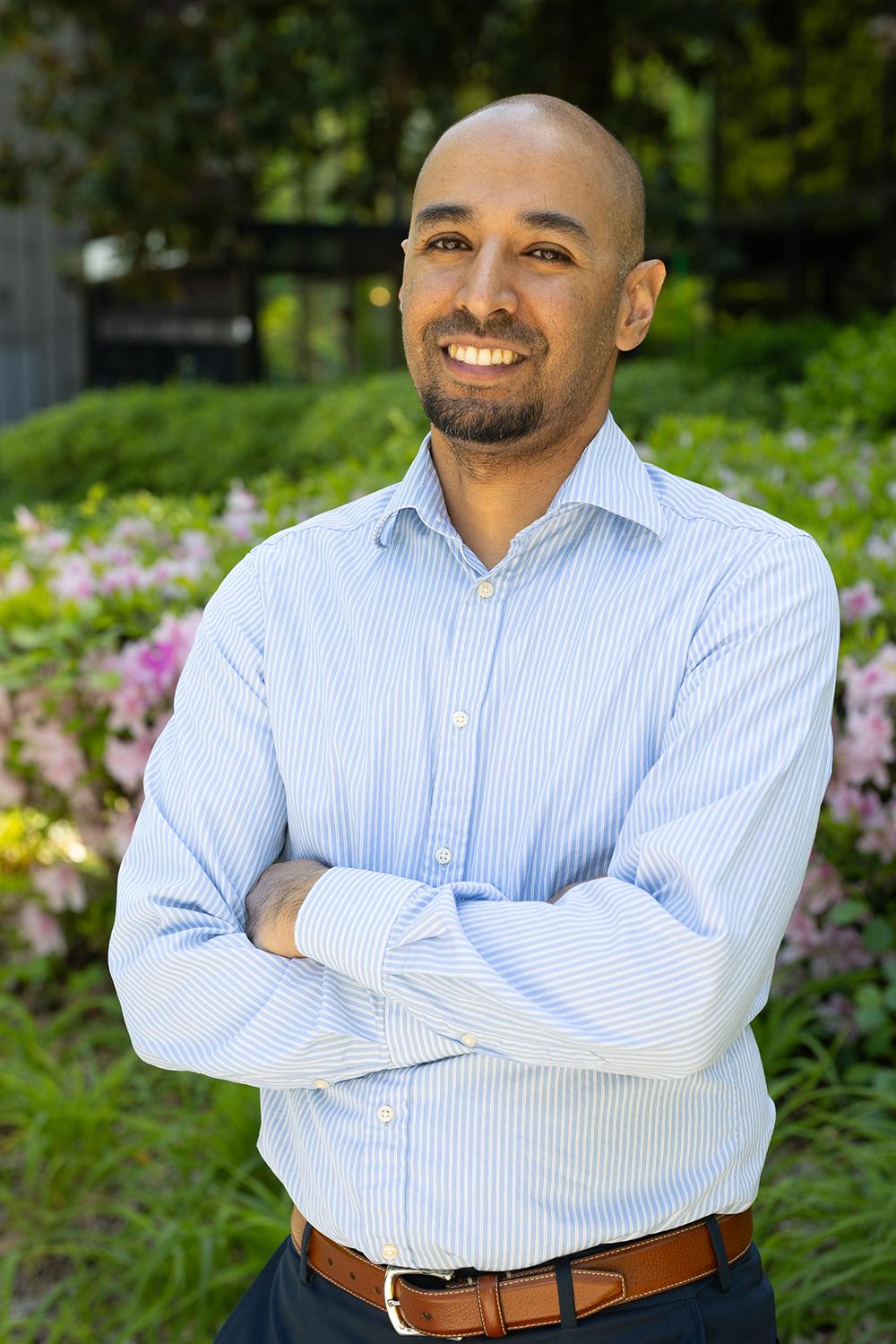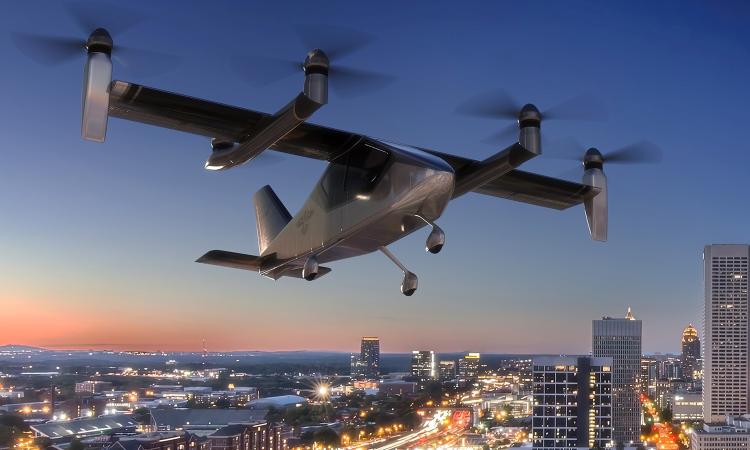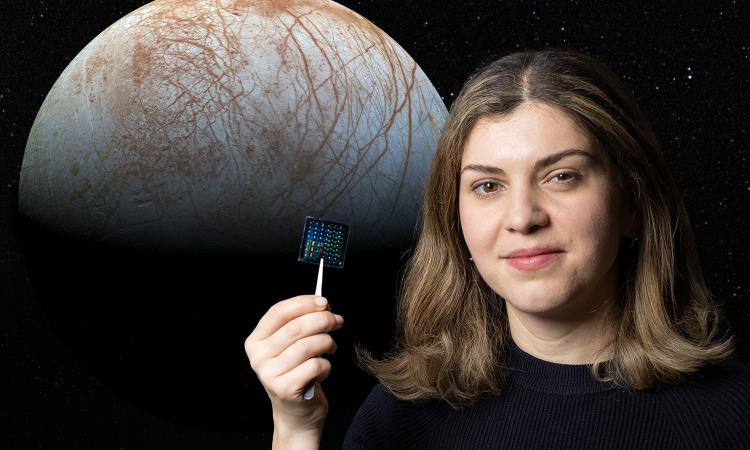Mechanical engineer Anirban Mazumdar and his team are developing the control systems and intelligent algorithms to enable safe flight at incredible speeds for uncrewed — and maybe one day passenger-carrying — hypersonic aircraft.
(text and background only visible when logged in)
Imagine boarding a jet in Atlanta and arriving in Japan in about the time it takes now to fly to Miami or Chicago.
That’s just one of the possibilities of research in an area of ultrafast flight called hypersonics. The term refers to traveling at roughly a mile a second, or about five times the speed of sound and faster.
Interest in hypersonics is growing, with early notions of high-speed passenger travel alongside defense and space applications driving questions about meeting the demands of Mach 5+ flight.
Such speeds introduce a host of new challenges for aerodynamics, thermal management, and rapid decision-making that Georgia Tech engineers are working to solve.
For Anirban Mazumdar in the George W. Woodruff School of Mechanical Engineering, aerospace questions have always been fascinating.
Hypersonics is an area where those questions are tough. Uncovering answers can have real impact on unlocking new capabilities for travel across the globe or to space, in addition to national security implications.
“It’s very challenging. We are trying to deal with very extreme scenarios, and we’re trying to do it, not just to advance science, but primarily because it matters to our country,” Mazumdar said. “That combination is incredible.”
The idea of hypersonics may sound new and exotic, but experiments by NASA, the Air Force, and the Navy first applied hypersonic theory to an actual flight vehicle in the 1950s and ‘60s. The X-15’s 199 flights contributed key knowledge to early spacecraft and, later, the Space Shuttle.
“People overlook the fact that the Space Shuttle was a hypersonic aircraft,” Mazumdar said. “When the shuttle reentered the atmosphere, it came in at hypersonic speeds. So do the SpaceX systems that come back to Earth. The Apollo capsules did too. Hypersonics is a part of what we do already.”
What’s growing is attention to vehicles traveling at these high speeds for other uses beyond space missions. The U.S. started actively pursuing development of hypersonic weapons in the early 2000s, with Congress ramping up funding in recent years for research on these systems. Meanwhile, private companies are working to build hypersonic autonomous aircraft for the military and passenger planes to shrink the globe, including work happening in Atlanta not far from Georgia Tech.
In Mazumdar’s lab, his team blends modeling and simulations with experimental validations — a combination of basic and applied research made possible by a close relationship between Tech and Sandia National Labs. In fact, in addition to his appointment as assistant professor in the Woodruff School, Mazumdar also is a faculty joint affiliate in the Autonomy for Hypersonics group at Sandia. He spends part of his time working at the Lab and with its hypersonic wind tunnel.

Anirban Mazumdar (Photo: Candler Hobbs)
Mazumdar’s goal is maximizing safe performance for vehicles traveling at extreme speeds. His team works to develop algorithms and control systems that can handle the physical stresses of those speeds while making safe and appropriate decisions in split-second timeframes. After all, if it takes several seconds to think about something, the aircraft has already traveled several miles before a decision is made.
HYPERSONICS ON CAMPUS
Anirban Mazumdar is a member of Georgia Tech’s Hypersonics Center of Excellence, a collaboration across campus and GTRI to develop new hypersonic capabilities. The initiative was created to deliver the technologies, testbeds, and talent to drive U.S. success in hypersonics.
Heat also is a significant problem at Mach 5 and beyond. Mazumdar is interested in developing ways to manage extreme heat by controlling the way vehicles fly.
“This could be relevant to a lot of future flight applications, where vehicles returning from space come through the atmosphere and get very hot,” he said. “It’s still very difficult to protect them from that heat. One challenge is developing materials and designs that can handle it. But the second question that we’re excited about is, can you fly in a different way that enables you to heat up less? Or can you protect certain parts of the vehicle that may not have as much thermal protection? We’re interested in how to do that more effectively in the future.”
Mazumdar, who came to the Woodruff School in 2018, said Georgia Tech is one of premier places to work on these complicated questions. He pointed to general excellence in engineering. That means researchers can work together across disciplines to tackle all of the relevant areas — materials, design, controls, aerodynamics, and experimentation. He also said the applied research expertise at the Georgia Tech Research Institute (GTRI) and the close collaboration with Sandia create a unique blend of capabilities.
For a long time, research in hypersonics has been led by industry or government agencies. But the role for academic research institutions is growing, thanks to new government initiatives. Mazumdar said those collaborations have expanded who can contribute to developing the technology and were instrumental in giving him early opportunities to study hypersonics.
“Working on hypersonics means exploring exciting scientific challenges that have not been solved, and it’s clearly very relevant to our country,” he said. “That makes it really fun, to get up and work every day on solving very hard problems that people care about.”
(text and background only visible when logged in)
(text and background only visible when logged in)
Related Stories

Engineering 21st Century Flight
The new ideas and emerging designs that will carry us into the future thanks to the work of Georgia Tech engineers.

Space: The Current Frontier
Our engineers have the solar system covered, with projects hundreds — or millions — of miles from home.

These Engineers are Flying High
Meet alumni working at some of the world’s leading aerospace organizations to innovate, fly safer, and travel farther.
(text and background only visible when logged in)

Helluva Engineer
This story originally appeared in the Spring 2025 issue of Helluva Engineer magazine.
Not where we are, but where we’re going — whether it’s here on the ground or millions of miles away. Georgia Tech engineers are shaping the rapidly shifting future of how we’ll fly people and stuff. Our engineers are helping get humans to the moon and, eventually, Mars, while creating the tools to help us unravel some of our solar system’s deepest mysteries. The sky is no limit in the Georgia Tech College of Engineering. Take off with us into The Aerospace Issue.